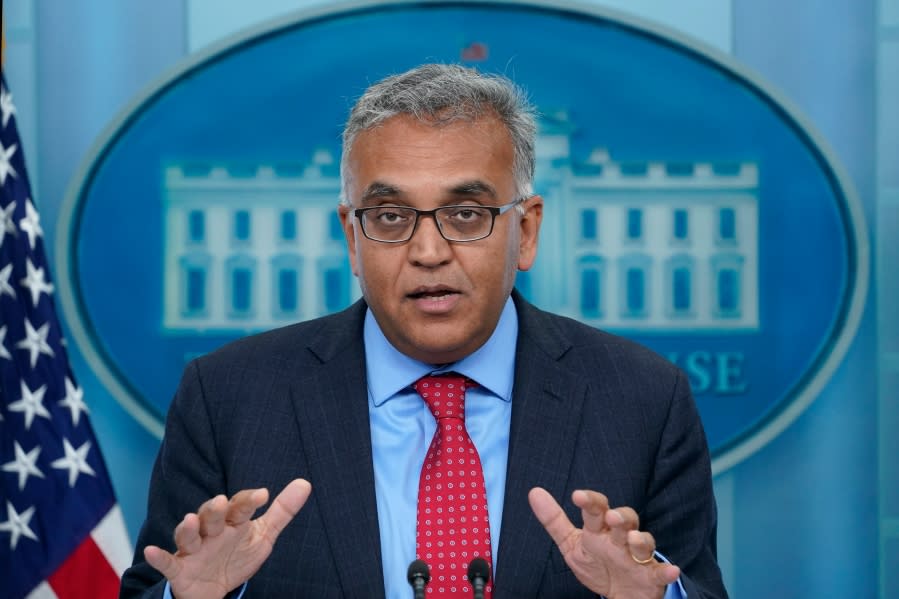White House touts vaccine benefits amid faltering booster rollout

- Oops!Something went wrong.Please try again later.
The White House is pushing newly released data on the benefits of the COVID-19 vaccinations as uptake for the updated bivalent booster shot remains low one month after it was authorized.
A new study from the Department of Health and Human Services (HHS), not yet published in a peer-reviewed journal, estimated that coronavirus vaccines were linked to roughly 670,000 to 680,000 fewer hospitalizations as well as 330,000 to 370,000 fewer related deaths from September 2020 to December 2021.
According to HHS, these estimates represented between 39 and 47 percent fewer deaths than in a possible scenario in which vaccines were not available. The research did not include potential cases that were averted, with HHS citing the rise in at-home testing that isn’t reported to officials.
On top of these potentially averted deaths and hospitalizations, the HHS study estimated more than $16 billion in direct hospitalization costs were saved due to immunization.
This research was carried out by HHS’s assistant secretary for planning and evaluation.
These estimations from HHS follow recent projections from the Kaiser Family Foundation released this week that found the bivalent booster had the potential to prevent 75,000 to 90,000 coronavirus deaths and prevent hundreds of thousands of more hospitalizations.
In a press briefing on Friday, HHS Secretary Xavier Becerra said this research “doubles down on the work that we’re doing on vaccination.”
“We’ve been trying to make sure that we stay ahead of this virus and keep America not only healthy but strong and keep our economy healthy and strong,” said Becerra.
White House COVID-19 Coordinator Ashish Jha said almost every death due to COVID-19 in the U.S. is now preventable and said the administration was “laser focused” on reducing illnesses and deaths in the country, though he declined to give an exact numerical goal when asked.
Part of achieving the administration’s goal begins with “making sure that every American gets an updated COVID vaccine,” according to Jha.
According to the Centers for Disease Control and Prevention (CDC), roughly 11.5 million people have received the updated booster, representing roughly 4 to 5 percent of the U.S. adult population.
People as young as 12 who have completed their primary round of coronavirus vaccines are eligible to get the shot as long as their last COVID-19 vaccine was at least two months ago.
When asked about the seemingly slow rollout of the bivalent booster, especially when compared to previous vaccine campaigns, Jha said he saw the current situation a “bit differently.”
“These are different vaccine campaigns. This one started about a month earlier than these vaccines were authorized for use at the end of or the end of August, early September, right around Labor Day,” said Jha. “We know that most Americans … when when people get their flu shots, they tend to get it in in late September, early October.”
According to Jha, the White House estimated that 13 to 15 million Americans will have gotten a booster shot by the end of this week. However, Jha acknowledged that the rate of coronavirus vaccination should be accelerated as the U.S. heads into the fall and winter.
“Let me be very clear: We need to continue and up that pace as we get into October. We think it’s a really smart idea for people to get their flu shot and their COVID vaccine at the same time. It’s what I did. It’s totally safe. It’s a very reasonable thing to do,” said Jha.
For the latest news, weather, sports, and streaming video, head to The Hill.

